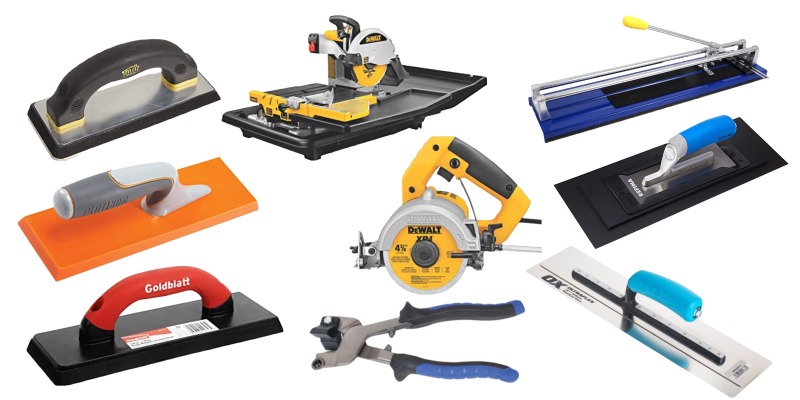Juldi.pk Maintenance Service: Expert Floor Base Preparation and Tile Installation in Lahore

Floor base preparation Lahore, tile installation services, Juldi.pk maintenance service, DHA floor services, Wapda Town tile installation, flooring in Lahore, professional floor services.
When it comes to creating a durable and aesthetically pleasing floor, the preparation of the floor base and the selection of appropriate materials are crucial. Juldi.pk, a leading maintenance service provider in Lahore, offers expert solutions for preparing different types of floor bases and ensuring top-quality tile installation. Serving prominent areas such as DHA, Wapda Town, Lake City, Valencia Town, Bahria Town, and Park View Villas, we deliver reliable and efficient services that stand the test of time.
Types of Floor Bases
Types of Floor Bases
The type of floor base plays a significant role in determining the longevity and stability of the flooring. Here are the common types of floor bases used in residential and commercial spaces:
Concrete Floor Base
Concrete is the most common and widely used floor base. It offers excellent durability, strength, and resistance to wear and tear. Concrete bases are suitable for both indoor and outdoor applications and provide a solid foundation for tile installation.
5Wooden Floor Base
Wooden floor bases are popular in residential spaces, offering a warm and natural look. However, they require careful preparation to ensure stability and prevent issues like warping or moisture damage. Wooden bases need to be level and well-sealed before tile installation.
Fiberglass Floor Base
Fiberglass bases are lightweight and resistant to moisture, making them ideal for areas prone to dampness, such as bathrooms or basements. They provide a smooth surface for tile installation and are easy to maintain.
PVC Floor Base
PVC (Polyvinyl Chloride) bases are flexible, durable, and resistant to chemicals and moisture. They are commonly used in commercial settings where hygiene and easy maintenance are a priority. PVC bases provide a good foundation for various types of flooring, including tiles.
Introduction to Floor Materials
Introduction to Floor Materials
Choosing the right floor materials is essential for ensuring a strong and durable base. At Juldi.pk, we use high-quality materials to prepare floor bases that meet industry standards.
Cement: Types and Properties
Cement: Types and Properties
Cement is a critical component in floor base preparation. The type of cement used can vary depending on the specific requirements of the project. Common types include:
- Ordinary Portland Cement (OPC): Suitable for general construction purposes.
- Rapid Hardening Cement: Used when quick setting is required.
- White Cement: Preferred for aesthetic purposes and in situations where the color of the floor is important.
Properties: High compressive strength, durability, and binding properties.
5Sand: Types and Properties
Sand is used as a filler material in the preparation of the floor base. The quality and type of sand can significantly impact the strength of the base.
- River Sand: Ideal for concrete mixtures, offering better bonding and strength.
- M-Sand: Manufactured sand, commonly used as an alternative to river sand.
Properties: Fine texture, clean, and free of impurities.
Aggregate: Types and Properties
5.3.3 Aggregate: Types and Properties
Aggregates are used in concrete mixes to provide bulk and stability. The choice of aggregate depends on the specific requirements of the floor base.
- Coarse Aggregate: Typically used in concrete for its strength and stability.
- Fine Aggregate: Used in the mortar mix for a smoother finish.
Properties: High strength, good binding properties, and durability.
Bricks: Types and Properties
Bricks: Types and Properties
Bricks can be used as part of the floor base, especially in traditional construction methods.
- Clay Bricks: Known for their strength and durability.
- Concrete Bricks: Preferred for their uniformity and strength.
Properties: High compressive strength, thermal insulation, and durability.
Reinforcement: Types and Properties
Reinforcement: Types and Properties
Reinforcement materials, such as steel bars or mesh, are used to strengthen the floor base, especially in areas with heavy load-bearing requirements.
Properties: High tensile strength, corrosion resistance, and flexibility.
Components of Tile Floor Base Preparation
Components of Tile Floor Base Preparation
A well-prepared floor base is essential for successful tile installation. Juldi.pk follows a systematic approach to ensure that the floor base is ready for tiling.
5Earth Filling and Compaction
The first step in preparing the floor base is earth filling, where the ground is leveled and compacted to create a stable foundation. Proper compaction is crucial to prevent settling and cracking of the tiles.
5Preparation of Sub-Base and Compaction
The sub-base is prepared by laying a layer of coarse aggregate, which is then compacted to create a solid foundation. This layer provides stability and prevents moisture from seeping into the upper layers.
Preparation of Base Course and Compaction
The base course is the layer directly beneath the tiles. It is prepared using a mix of cement, sand, and aggregate, which is compacted to create a smooth and even surface. This layer ensures that the tiles adhere properly and remain level.
Preparation of Floor Base
The floor base is the final layer before tile installation. It is carefully leveled and smoothed to ensure that the tiles can be laid evenly. The quality of this layer is crucial for preventing issues like cracking and uneven tiles.
Fixing Tiles
The tiles are then fixed onto the prepared floor base using a suitable adhesive. Juldi.pk uses high-quality tile adhesives that provide strong bonding and durability.
Types of Base
Types of Base
The base can be classified into two main types:
Hollow Base
A hollow base is typically used in areas where weight reduction is a priority. It involves creating a raised floor with cavities beneath, which can be filled with lightweight materials.
Solid Base
A solid base is a dense, continuous layer that provides maximum stability and support for the tiles. It is the most common type of base used in tile installation.
Levelling of the Base Layer
The base layer must be perfectly level to prevent issues like tile misalignment and cracking. Juldi.pk uses advanced leveling tools to ensure precision.
Preparation of the Underlayer of Floor
Preparation of the Underlayer of Floor
The underlayer provides additional support and stability to the floor base. It is typically made of a sand-cement mix that is compacted and leveled.
Apply Sealant
Applying a sealant helps protect the floor base from moisture and other environmental factors. This step is crucial in areas prone to dampness, such as bathrooms and kitchens.
Practice to Lay Tiles on Prepared Base/Sealant
Once the base is prepared and the sealant is applied, the tiles are laid using precise techniques to ensure proper alignment and bonding.
Joint Filling with Pigment
After the tiles are laid, the joints are filled with a pigment-based grout. This not only secures the tiles but also enhances the aesthetic appeal by matching the grout color with the tiles.
Table: Components of Tile Floor Base Preparation
| Component | Description |
|---|---|
| Earth Filling and Compaction | Leveling and compacting the ground to create a stable foundation. |
| Preparation of Sub-Base | Laying and compacting coarse aggregate to create a stable sub-base. |
| Preparation of Base Course | Compacting a mix of cement, sand, and aggregate to create a smooth surface. |
| Preparation of Floor Base | Final leveling and smoothing of the floor base before tile installation. |
| Fixing Tiles | Laying tiles on the prepared base using high-quality adhesives. |
| Levelling of the Base Layer | Ensuring the base layer is perfectly level for proper tile alignment. |
| Apply Sealant | Protecting the floor base from moisture with a sealant. |
| Joint Filling with Pigment | Filling tile joints with grout to secure tiles and enhance aesthetics. |
Conclusion
Juldi.pk is committed to providing top-quality floor base preparation and tile installation services in Lahore. Whether you are in DHA, Wapda Town, Lake City, Valencia Town, Bahria Town, or Park View Villas, our expert team is equipped to handle all your flooring needs with precision and care. Contact us today to schedule your consultation and experience the best in flooring services.

